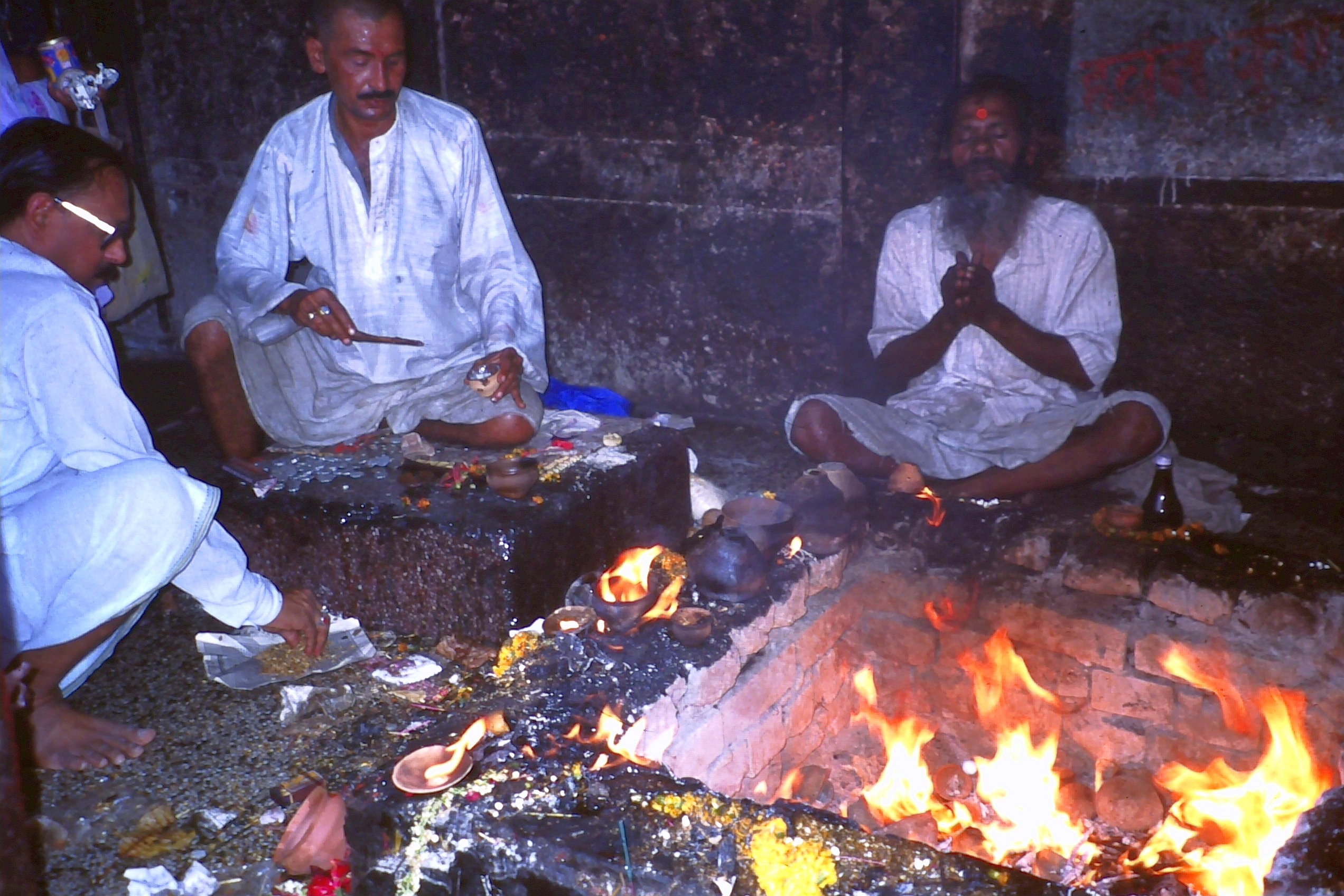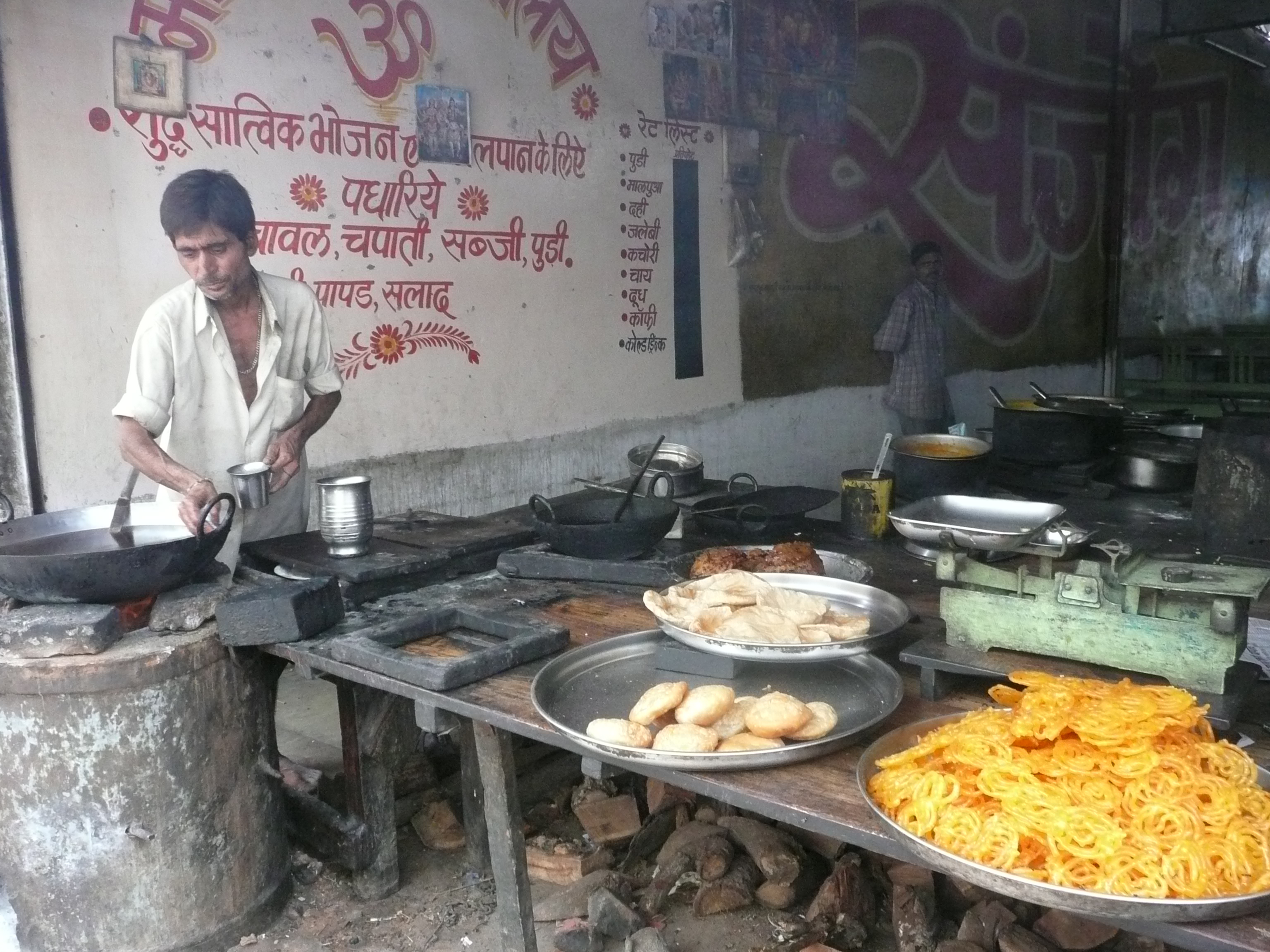The Kutiyattam/Koodiyattam Sacred Dance Tradition
Kutiyattam is a sacred dance tradition practiced in Hindu temples in India, specifically in the Kerala region, and it is the oldest living theatre tradition as it is believed to be over two thousand years old (“Koodiyattam.” New World Encyclopedia). “In 2001, Koodiyattam was officially recognized by UNESCO (United Nations Educational, Scientific, and Cultural Organization) as a Masterpiece of the Oral and Intangible Heritage of Humanity” (“Koodiyattam.” New World Encyclopedia). The performance of this tradition includes elaborate costuming and make-up, chanting, exaggerated facial expressions, and hand gestures. Kutiyattam is not only a mixture of the sacred and the traditional, but also of improvisations from the actors during the performances, which can last up to several days or even weeks (“Koodiyattam.” New World Encyclopedia). The lengthiness of these performances led to Kutiyattam no longer being performed as a whole in the modern world; instead it is split up into multiple acts, which are taken as separate entities in and of themselves (Pfaff 135). “A Kutiyattam performance can be separated into four parts: pre-play activities (purvaranga), descriptions of the past in flashbacks (nirvahanam), the performance and elaboration of the text itself, and the final rituals (mutiyakitta). Each of these parts also consists of several different sequences” (Pfaff 135).
In the performance of Kutiyattam, everything has meaning; nothing is done on a whim or without intention. Therefore, it makes sense that even the construction of the kuttambalam, sacred theatres on the grounds of Hindu temples in Kerala where the Kutiyattam is performed, would have spiritual significance. The assembly of a kuttambalam is linked to the concept of vastupurusamandala, which is a combination of three words: vastu, Purusa, and mandala (see Richmond 52). Vastu is a concept associated with the boundaries of existence and, in this case, relates to the boundaries of the temple and the kuttambalam as representations of the “Divine Cosmic Essence (Purusa)” (Richmond 52). With Purusa being the sacrificial god, the building of a temple and a kuttambalam, as well as the performance of Kutiyattam are seen as sacrifices. “The mandala is a ritual diagram or plan which guides the form or existence of a sacred place. [It] is not an architect’s blueprint […] it is the space which reflects the Hindu world view and conception of the universe” (Richmond 52-53). Furthermore, Hindu concepts of time are also represented in the construction of a kuttambalam: layers making up the altar correspond to the number of seasons and the number of bricks used correspond to the number of days in a year, for example (Richmond 53). This careful and meaningful construction of the temples and the kuttambalam display the spirituality inherent in the tradition of the Kutiyattam.
Further demonstration of the meaning and spirituality intrinsic to all aspects of Kutiyattam is the rite an actor goes through in order to transcend this world, as they are believed to do, and successfully enter into the sacred world of Kutiyattam and the way in which actors are said to lose themselves in the roles of their characters. The importance of the actor in Kutiyattam performances is paramount, though not all scholars agree as to whether or not the actors fully lose themselves in their roles. In the opinion of some scholars, such as Mundoli Narayanan, the actor never truly loses himself in the role and it is never forgotten that he is indeed simply an actor playing a role (Narayanan 140). Performing Kutiyattam is said to be akin to entering a sacred space and therefore, all of the rules regarding ritual pollution and purity apply. The rite an actor undergoes is believed to protect both him and the sacred space from pollution. Moreover, in the opinion of some scholars, when the actor completes the rite, he is believed to be preparing himself for transcendence in being as well. In other words, it is believed that he loses his own personality and prepares to immerse himself in the personality of his character (Richmond 55). The process of an actor losing oneself so fully in a role is especially apparent in the trance dancing in West Java. In these performances, it is believed that not only do the actors lose themselves in their roles, but it goes beyond that to the belief that the actors lose themselves in an altered state of existence whereupon they become the hosts for another being (Foley 28). In this state, the belief is that the actor does not merely become someone else temporarily, but is literally replaced by someone or something else for the interim of the performance.
The performance of Kutiyattam is imbued with meaning and is taken seriously because it is serious and it is important. Kutiyattam is spiritual, sacred and has strong ties to religion and ideals of sacrifice. The actors are meant to be representing cosmic beings and mythical characters, so they wear elaborate costumes and intricately detailed make-up. They do not look like normal, everyday Indians because they are not supposed to be normal, everyday Indians (Richmond 56). The performance of Kutiyattam has preserved traditions and belief structures from over two thousand years ago as outlined in the Natyasastra (Sullivan 98). The performances are not merely for entertainment, they are seen as sacrifices, devotional offerings, et cetera. An example of the traditions preserved by Kutiyattam can be found in the rituals that take place prior to a performance, which serve to “consecrate the stage, making it pure and auspicious for the performance to follow, much as a sacrificial site or temple would be consecrated before being used” (Sullivan 99). This consecration is important because, as previously stated, the kuttambalam and the Kutiyattam are both seen as sacred spaces and as such, they must be protected from ritual pollution.
The religious aspects of Kutiyattam are apparent to some scholars such as Bruce M. Sullivan in that they are “very much in the Vaisnava tradition; they invoke Visnu in the prologue and closing benediction and feature praise of Visnu, Krsna and/or Rama,” though Kutiyattam is not exclusively performed in Visnu temples. Ergo, one deity may be venerated in a temple devoted to another deity (Sullivan 100). The religious facets of Kutiyattam are believed to be further exhibited by the audiences that typically attend the performances, which are generally made up of Brahmins, royalty, temple servants, or other devout Hindus. Furthermore, Kutiyattam is most often performed in relation to religious festivals (Sullivan 100). In the opinion of some scholars, Kutiyattam is meant to be entertaining as well as providing a religious experience that is pleasing both to the audience and to the deities, which are also believed to be in attendance. This overall experience is defined in the contested theory of rasa, wherein the audience is said to become active participants in the religious aspects of Kutiyattam and not merely passive observers (Sullivan 101). Not all scholars agree about the importance of rasa; some, such as Mundoli Narayanan, argue that this theory was developed long after the establishment of Kutiyattam itself and therefore was not an original intention in the creation and performance of Kutiyattam (Narayanan 140).
The theorized religious experience is thought to be even more intense for the actors in Kutiyattam performances because, as previously stated, the actors are believed–by some–to be transcending to a higher plane where they are portraying Gods or those that are God-like. “Master performer Ammannur Madhava Cakyar described his acting as a sacred religious duty (dharma), comparable to doing yoga or saying a prayer” [in an interview with Bruce Sullivan (1992); quoted Sullivan 103].
Some important features of Kutiyattam besides the characteristics of rasa are features which come from outside of the text such as the implementations of nirvahanam, the language of gesture, and the repetition of lines. Nirvahanam is the background of a character as created and demonstrated by the actor, which reveals a character’s history and motivation and which, in and of itself, may take several days to complete (Sullivan 105). This language of gesture element pertains to elaborate hand movements and exaggerated eye and facial movements that the actor utilizes during the performance. These gestures and movements all have specific meanings and are meant to elaborate on the text and, in the opinion of some scholars, aid in the development of rasa (Sullivan 106). The repetition of lines is a feature seen as being employed in order to promote understanding, as Kutiyattam is performed in either “Sanskrit or a dialect of Prakrit” and only a scholarly few speak these languages, and to cultivate an appreciation of the poetry and emotions that are involved (Sullivan 107). Each line is repeated three times in order to accomplish this goal.
In order to make Kutiyattam more accessible to the masses and keep the tradition alive by increasing its popularity, in the recent past and in the modern world today, there is a revolution occurring within the practice of Kutiyattam, though some argue whether this is indeed necessary (Sullivan 107). One change that is argued to be important in making Kutiyattam more accessible is the endeavour to shorten the performances by, for example, removing the repetition and “extensive pantomime” (Sullivan 107). Moreover, in some incarnations, the actors or producers are removing the nirvahanam altogether as they see it as unnecessary [G. Venu in his production of Sakuntala as referenced by DuComb 101].
Kutiyattam was originally performed exclusively by men of the Cakyar caste and women of the Ambalavasi Nambiar caste and, until the 1950s, these performances were confined to the kuttambalam. However, in 1955, Kutiyattam master Mani Madhava Cakyar began to perform outside of these temples because he was concerned about the preservation of the tradition. Mani Madhava Cakyar’s troupe performed all over India and Kutiyattam began to grow in popularity as Mani Madhava Cakyar made changes such as performing in the more widely-spoken Malayalam language, as opposed to Sanskrit, and not only performing plays based on the Hindu epics, such as the Ramayana or the Mahabharata, but performing secular plays as well. The “classical art form” of Kathakali, which emphasizes music and dance over precise and practiced acting, grew out of this revolutionized Kutiyattam (“Koodiyattam.” New World Encyclopedia).
References and Further Recommended Reading
DuComb, Christian (2007) “Present-Day Kutiyattam: G. Venu’s Radical and Reactionary Sanskrit Theatre.” TDR: The Drama Review 51:3 (T195) Fall 2007. ©2007 New York University and the Massachusetts Institute of Technology.
Foley, Kathy (1985) “The Dancer and the Danced: Trance Dance and Theatrical Performance in West.” Asian Theatre Journal, Vol. 2, No. 1 (Spring, 1985), pp. 28-49: University of Hawai’i Press.
“Koodiyattam.” New World Encyclopedia. 12 Jul 2008, 13:38 UTC. 9 March 2012, 17:38 <http://www.newworldencyclopedia.org/entry/Koodiyattam?oldid=756764>.
Narayanan, Mundoli (2006) “Over-Ritualization of Performance: Western Discourses on Kutiyattam.” TDR: The Drama Review (1988-), Vol. 50, No. 2 (Summer, 2006), pp. 136-153: The MIT Press. University of Hawai’i Press.
Pfaff, Walter (1997) “The Ant and the Stone: Learning Kutiyattam.” TDR: The Drama Review (1988-), Vol. 41, No. 4 (Winter, 1997), pp. 133-162: The MIT Press. University of Hawai’i Press.
Richmond, Farley and Yasmin Richmond (1985) “The Multiple Dimensions of Time and Space in Kūṭiyāṭṭam, the Sanskrit Theatre of Kerala.” Asian Theatre Journal, Vol. 2, No. 1 (Spring, 1985), pp. 50-60: University of Hawai’i Press. University of Hawai’i Press.
Sullivan, Bruce M. (1997) “Temple Rites and Temple Servants: Religion’s Role in the Survival of Kerala’s Kūṭiyāṭṭam Drama Tradition.” International Journal of Hindu Studies, Vol. 1, No. 1 (Apr., 1997), pp. 97-115: Springer. University of Hawai’i Press.
Related Topics for Further Investigation
Rasa
Kathakali
Trance dancing in West Java
Cakyar caste
Nambiar caste
Kuttambalams
The Ramayana
The Mahabharata
Mani Madhava Cakyar
Sakuntala
Nirvanaham
Mutiyakitta
Visnu
Krsna
Rama
Natyasastra
Purusa
Purvaranga
Vastu
Mandala
Noteworthy Websites Related to the Topic
http://www.xip.fi/atd/india/kutiyattam-the-only-surviving-form-of-sanskrit-drama.html
http://www.keralatourism.org/kerala-article/206/kutiyattam-theatre-art.php
http://www.indianholiday.com/kerala/arts-and-crafts/dances-of-kerala/kutiyattam-dance.html
http://www.cbseguess.com/education/india_facts/kutiyattam_dance_drama.php
http://www.mykerala.net/koodiyattom/koodiyattom.html
http://www.keralaorbit.com/dance-in-kerala/kutiyattam-dance/kutiyattam-dance.html
http://www.youtube.com/watch?v=nUgS4Gmg1O0
http://www.spiderkerala.net/resources/7811-Koodiyattam-Kutiyattam-Kerala-s-Ancient-Theatre.aspx
Article written by Belinda Dunford (Spring 2012), who is solely responsible for its content.



